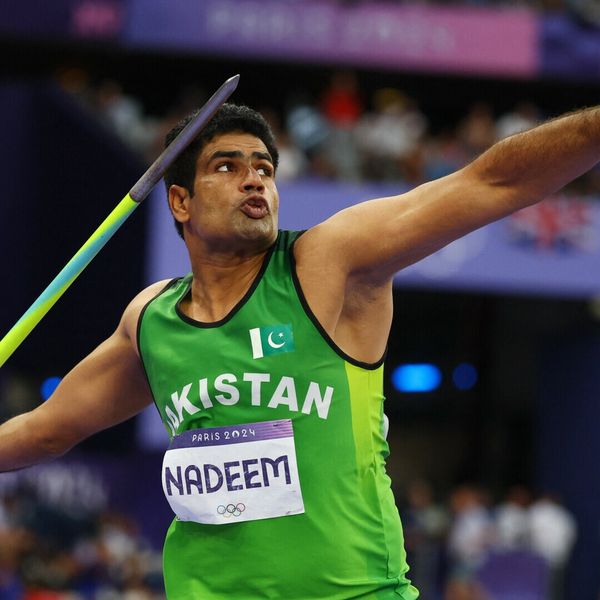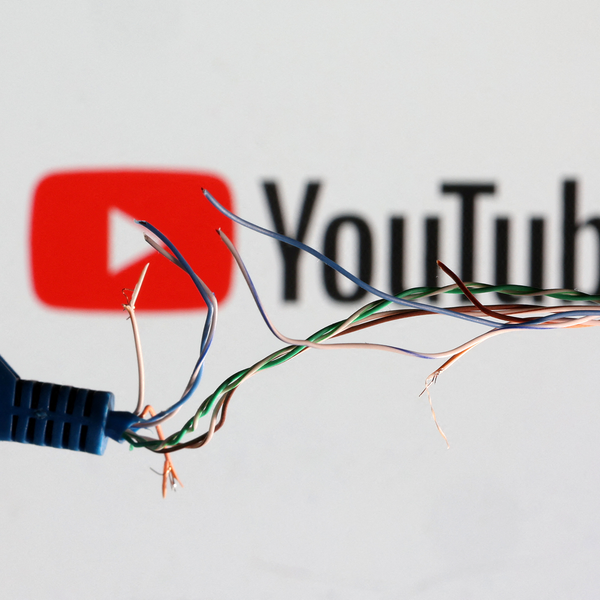Better internet connectivity alas? Pakistan plans major expansion with new submarine cables
The country is set to expand its internet capacity by 26.5 Tbps with five new submarine cable systems in the next three to four years

Javed Hussain
Correspondent
I have almost 20 years of experience in print, radio, and TV media. I started my career with "Daily Jang" after which I got the opportunity to work in FM 103, Radio Pakistan, News One, Ab Tak News, Dawn News TV, Dunya News, 92 News and regional channels Rohi TV, Apna Channel and Sach TV where I worked and gained experience in different areas of all three mediums. My journey from reporting to news anchor in these organisations was excellent. Now, I am working as a correspondent with Nukta in Islamabad, where I get the opportunity of in-depth journalism and storytelling while I am now covering parliamentary affairs, politics, and technology.

Workers install the 2Africa undersea cable on the beach in Amanzimtoti, South Africa, February 7, 2023.
Pakistan's government has unveiled an ambitious plan to enhance the country’s internet infrastructure by connecting it to five new international submarine cable systems.
The initiative, set to be completed within the next three to four years, aims to bolster international connectivity and accommodate growing data demands.
In 2024, Pakistan faced recurring internet disruptions due to multiple factors, including undersea cable faults, infrastructure deficiencies, and government-imposed restrictions.
Users across the country reported slow speeds and frequent outages, particularly during peak hours.
According to official documents reviewed by Nukta, the five new submarine cable systems include Africa-1, SMW6, Africa-2, PEACE, and Gulf Gateway (MGG-1). These additions will increase Pakistan’s total bandwidth capacity by 26.5 terabits per second (Tbps).

Africa-2 has already landed in Pakistan as of December 2024, and work is underway to integrate the remaining cables. The Pakistan Telecommunication Company Ltd. (PTCL) will operate Africa-1 and SMW6, providing 6.5 Tbps and 6 Tbps of bandwidth, respectively.
Meanwhile, Transworld Associates (TWA) will manage Africa-2, delivering 10 Tbps, while PEACE will be operated by Link.Net, supplying 2 Tbps. Cybernet will oversee Gulf Gateway (MGG-1), which will also provide 2 Tbps.
Pakistan currently lacks an Asia-Africa-Europe-2 (AAE-2) cable system. Seven of the eight existing submarine cable systems are functional, including SMW-4, IMEWE, AAE-1, TWA-1, SMW-5, PEACE, and the Pak-China and FC cables. The installed bandwidth capacity is 14.739 Tbps, with an active capacity of 9.281 Tbps, sufficient to handle the current demand of approximately 1,300 petabytes (PB). However, with the rising demand for data, particularly in anticipation of 5G deployment, the expansion is deemed critical.

The Ministry of Information Technology and Telecommunication (MoITT) stated that the new cable systems will enhance Pakistan’s internet capacity, improve access to international networks, and support additional internet traffic.
Domestic fiberization expansion
The expansion of fiber-optic networks within Pakistan is also a key priority under the fiberization plan. Currently, nine Long Distance International (LDI) companies operate in Pakistan, maintaining a combined network of 75,967 kilometers of fiber-optic cables.
PTCL owns the largest share with 24,401 kilometers, followed by Wateen Telecom with 21,338 kilometers, Link.Net Telecom Limited with 10,457 kilometers, and Multinet Pakistan with 7,119 kilometers.

Other key operators include the National Telecommunication Corporation (NTC), the Special Communication Organization (SCO), CM Pakistan, Cyber Internet Services, and Sunwalk Optical Fiber Network.
There are 19 LDI operators in total, each maintaining 14 Network Connection Points (NCPs) to link local loop operators with international cable systems.
To further boost fiberization, the Pakistan Telecommunication Authority (PTA) has mandated the rollout of an additional 1,500 kilometers of fiber-optic cable under LDI licensing requirements. The initiative aims to improve intercity connectivity, expand fixed broadband penetration, and strengthen cellular services.
Pakistan’s metro fiber network currently extends 135,506 kilometers through fixed-loop licensed operators. Despite this infrastructure, connectivity issues persist in Tier-2 and Tier-3 cities due to high right-of-way (ROW) costs and inadequate urban planning.
Mobile and broadband growth
Pakistan’s digital landscape continues to grow, with mobile broadband subscriptions reaching 138.5 million. The average monthly data consumption per user stands at 8.4 gigabytes.
The country has 55,776 Base Transceiver Station (BTS) towers, with an average download speed of 0.4 megabytes per second.
Meanwhile, fixed broadband services remain limited, with only 3.6 million subscribers. The Ministry of IT has identified the need for additional infrastructure to address connectivity gaps, particularly in rural and underserved areas.










Comments
See what people are discussing